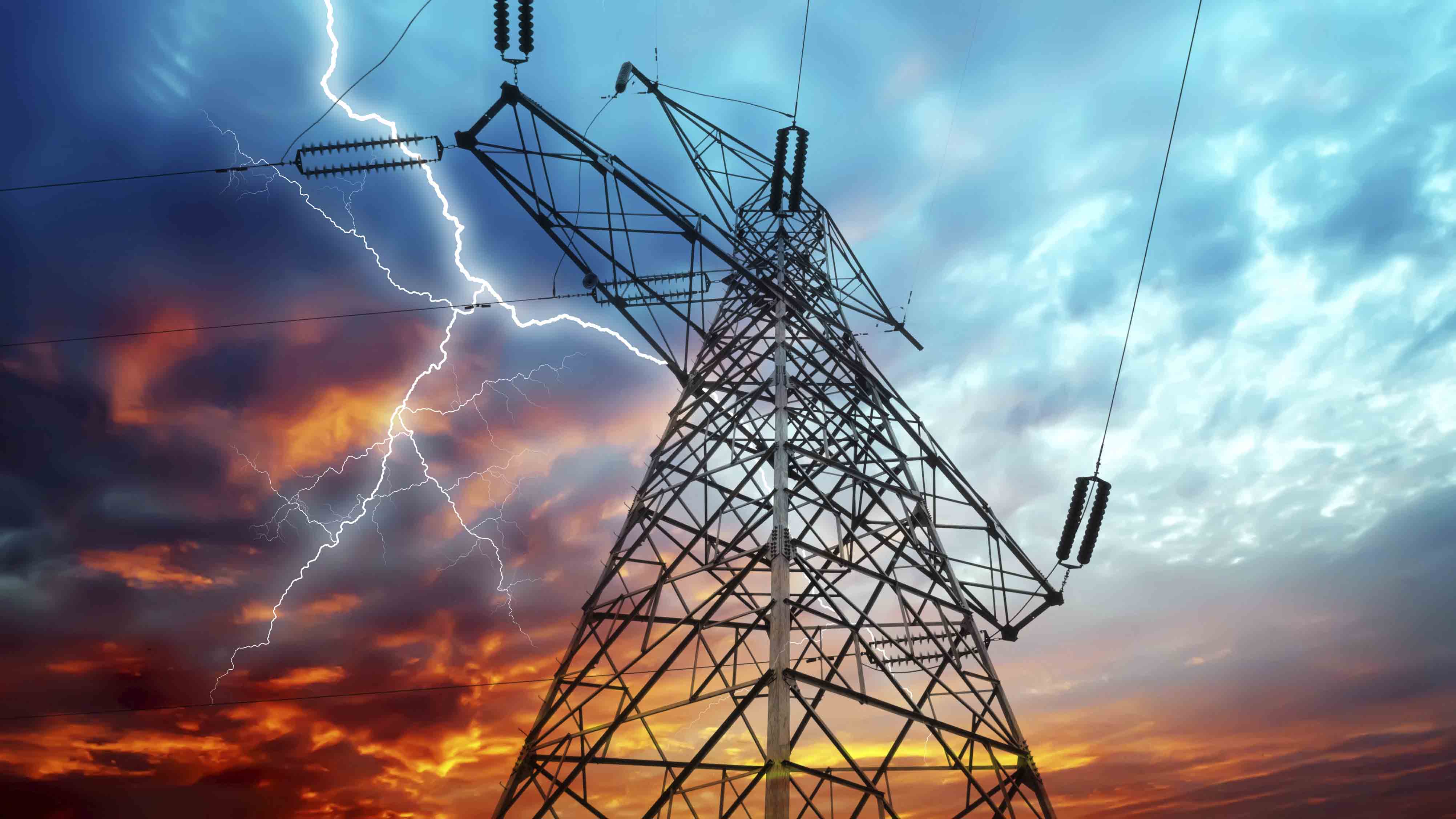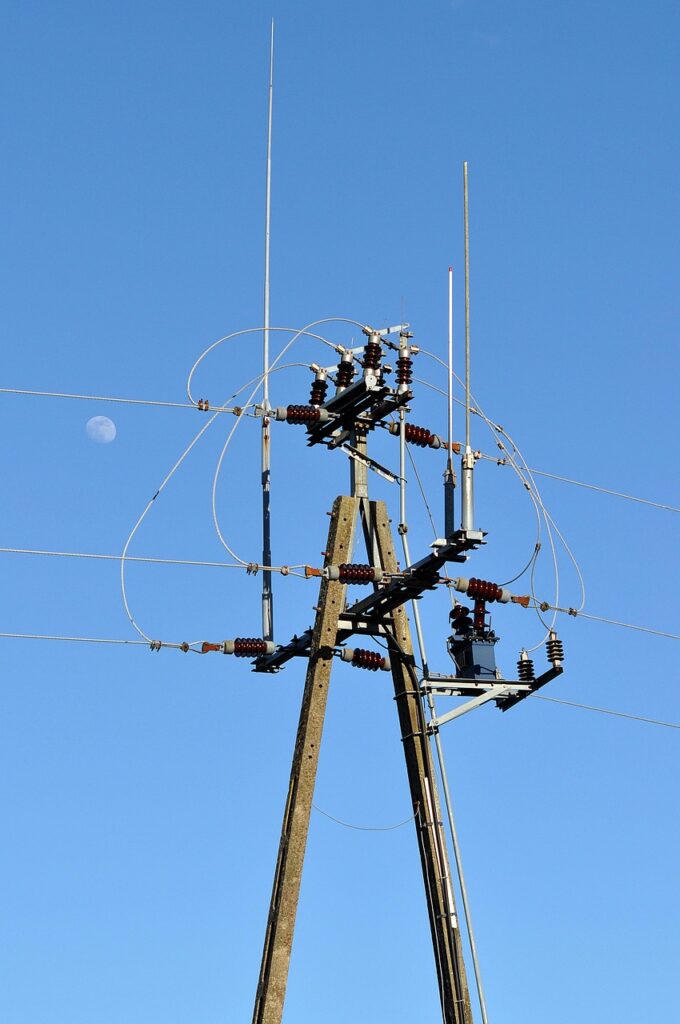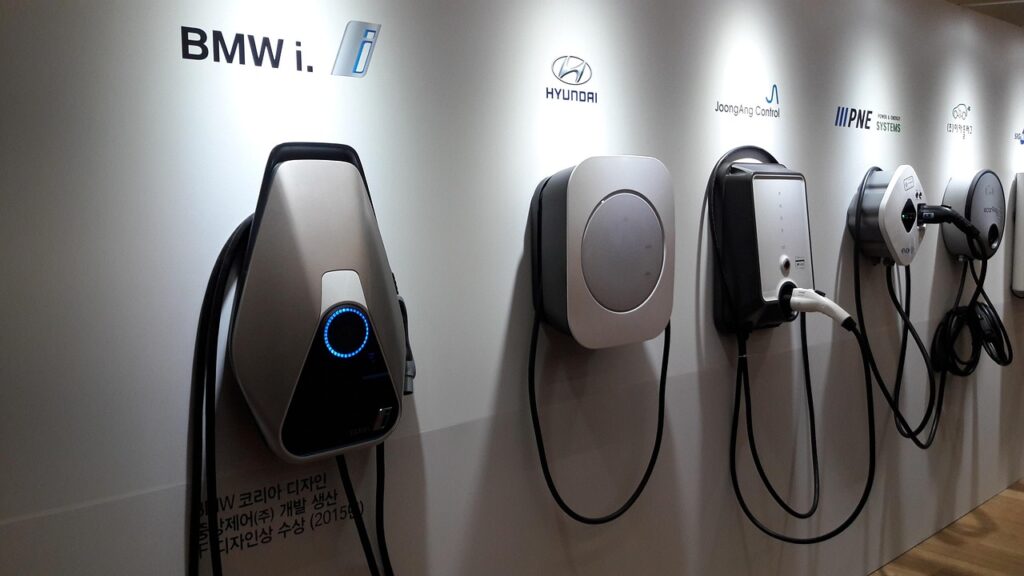
Electricity. Just uttering the word brings to mind the countless ways it powers our daily lives, from the smartphones in our pockets to the lights illuminating our homes. But have you ever paused to think about what electricity actually *is*? It’s more than just a convenience; it’s a fundamental force of nature, an invisible ballet of charged particles that has shaped our modern world in ways both profound and utterly captivating.
This deep dive isn’t just a dry textbook lesson. Instead, we’re taking a thrilling journey through the very essence of electricity, exploring its foundational concepts and charting its incredible historical evolution. From ancient mysteries to groundbreaking scientific revelations, we’ll uncover the moments and minds that transformed electricity from a mere curiosity into the indispensable bedrock of industrial society. Get ready to explore the ‘why’ and ‘how’ behind this electrifying phenomenon.
So, let’s pull back the curtain and peek into the electrifying world of charges, currents, and fields. We’ll kick things off by understanding what electricity fundamentally represents, then travel back in time to witness its earliest, most intriguing manifestations and the incredible leaps in understanding that have led us to where we are today. Prepare to be enlightened!

1. **What is Electricity? The Invisible Force Shaping Our World** Electricity, at its core, is the set of physical phenomena associated with the presence and motion of matter possessing an electric charge. It’s a fundamental aspect of electromagnetism, inextricably linked with magnetism, a relationship beautifully described by Maxwell’s equations. While invisible, electricity frequently yields visually observable phenomena, such as the dramatic flash of lightning across a stormy sky or the glow of electric light in buildings.
The presence of an electric charge, whether positive or negative, creates an electric field around it. When these electric charges move, they constitute an electric current, which, in turn, produces a magnetic field. In most practical applications, the forces acting on an electric charge are governed by Coulomb’s law, dictating the attraction or repulsion between charged particles based on their magnitude and distance.
Furthermore, the concept of electric potential, typically measured in volts, quantifies the work done to move an electric charge from one point to another within an electric field. This remarkable set of phenomena plays an absolutely central role in countless modern technologies. From electric power, where current energizes equipment, to the intricate world of electronics involving active components like transistors and integrated circuits, electricity forms the very foundation of our interconnected society. Its versatility has driven transformations in transport, heating, lighting, communications, and computation, making it truly the bedrock of modern industrial society.
2. **Ancient Awakenings: Electric Fish and Amber’s Allure** Long before the scientific understanding of electricity began to take shape, humanity was aware of its startling effects. Ancient Egyptian texts, dating back as far as 2750 BCE, described electric fish as the “protectors” of all other fish, a testament to the powerful shocks they could deliver. These astonishing creatures were also reported millennia later by ancient Greek, Roman, and Arab naturalists and physicians, highlighting their enduring mystery and awe-inspiring capabilities.
Several ancient writers, including Pliny the Elder and Scribonus Largus, documented the numbing effect of electric shocks from electric catfish and electric rays. Intriguingly, they also knew that these shocks could travel along conducting objects, an early, albeit rudimentary, understanding of electrical conductivity. It was even a form of ancient therapy: patients suffering from ailments such as gout or headache were directed to touch electric fish, in the hope that a powerful jolt might cure them of their maladies.
Beyond the aquatic, ancient cultures around the Mediterranean also observed another fascinating phenomenon. They noticed that certain objects, like rods of amber, could be rubbed with cat’s fur and subsequently attract light objects such as feathers. Around 600 BCE, Thales of Miletus made a series of observations on this static electricity, believing that friction rendered amber magnetic, contrasting it with minerals like magnetite that required no rubbing. While Thales was incorrect in attributing the attraction solely to a magnetic effect, his observations were crucial, and later science would indeed prove a profound link between magnetism and electricity. Adding another layer of intrigue, a controversial theory suggests the Parthians may have had knowledge of electroplating, spurred by the 1936 discovery of the Baghdad Battery, which remarkably resembles a galvanic cell. However, whether this ancient artifact was genuinely electrical in nature remains uncertain, a captivating historical enigma.

3. **Coining a Concept: William Gilbert and “Electricus”** For millennia, electricity remained largely an intellectual curiosity, a collection of intriguing but poorly understood phenomena. It wasn’t until the year 1600 that a significant stride was made, thanks to the meticulous work of the English scientist William Gilbert. In his seminal work, *De Magnete*, Gilbert undertook a careful and systematic study of both electricity and magnetism. Crucially, he succeeded in distinguishing the lodestone effect, a form of natural magnetism, from the static electricity produced by rubbing amber, which had previously been conflated.
Gilbert’s rigorous investigations led him to coin a new Neo-Latin word: *electricus*. This term, meaning “of amber” or “like amber,” was derived directly from the Greek word for amber, *ἤλεκτρον* (elektron). He used *electricus* to refer specifically to the property of attracting small objects after being rubbed, giving a name to the mysterious force that amber possessed. This linguistic innovation was more than just a new word; it provided a distinct identity to this particular phenomenon, separating it from magnetism.
This vital association gave rise to the English words “electric” and “electricity,” which made their very first appearance in print in Thomas Browne’s *Pseudodoxia Epidemica* in 1646. The scientific community, now equipped with a clear terminology, could begin to articulate and investigate these forces with greater precision. Even Isaac Newton, one of history’s most towering scientific figures, made early investigations into electricity, with an idea expressed in his book *Opticks* arguably marking the inception of the field theory of the electric force, setting the stage for centuries of further discovery.

4. **Franklin’s Sky-High Experiment and the Leyden Jar’s Secrets** The 17th and early 18th centuries saw further foundational work by scientists such as Otto von Guericke, Robert Boyle, Stephen Gray, and C. F. du Fay, each adding pieces to the ever-growing puzzle of electricity. However, it was in the latter half of the 18th century that Benjamin Franklin, a true polymath, embarked on extensive research in electricity, famously selling his possessions to fund his groundbreaking work. His dedication would lead to one of science’s most iconic and daring experiments.
In June 1752, Franklin is widely reputed to have performed his legendary kite experiment. In a storm-threatened sky, he attached a metal key to the bottom of a dampened kite string and flew the kite high above. The succession of sparks that jumped from the key to the back of his hand provided compelling, if incredibly dangerous, evidence that lightning was indeed electrical in nature. This audacious demonstration conclusively linked the grand, awe-inspiring power of a thunderstorm with the smaller, more manageable sparks generated in a laboratory.
Franklin’s contributions didn’t stop at understanding lightning. He also profoundly explained the seemingly paradoxical behavior of the Leyden jar, a device capable of storing significant amounts of electrical charge. He meticulously detailed how electricity consisted of both positive and negative charges, a concept that clarified the Leyden jar’s function and laid critical groundwork for understanding charge storage and capacitors. His work provided clarity to a phenomenon that had previously baffled scientists, illustrating the dual nature of electric charge and advancing the practical application of electrical principles.

5. **From Bioelectricity to the First Modern Battery: Galvani and Volta** As the understanding of electricity progressed, so did the exploration of its more nuanced and intricate manifestations. In 1775, Hugh Williamson presented a series of experiments to the Royal Society, detailing the shocks delivered by the electric eel, further piquing scientific interest in biological electricity. That same year, the surgeon and anatomist John Hunter meticulously described the complex structure of the fish’s electric organs, providing a deeper anatomical insight into this natural marvel.
A pivotal moment arrived in 1791 when Luigi Galvani published his revolutionary discovery of bioelectromagnetics. Through his experiments, he demonstrated that electricity served as the fundamental medium by which neurons transmitted signals to muscles, causing them to contract. This revelation was nothing short of extraordinary, establishing a profound connection between electricity and living organisms, forever changing our understanding of biological processes and paving the way for the field of neurophysiology.
Building upon these insights and the limitations of previous electrostatic machines, Alessandro Volta introduced his groundbreaking battery, or voltaic pile, in 1800. This ingenious device, constructed from alternating layers of zinc and copper, represented a monumental leap forward. It provided scientists with the first truly reliable and continuous source of electrical energy, a stark contrast to the sporadic and often unreliable bursts of charge from electrostatic generators. Volta’s battery ushered in an era of systematic electrical experimentation, enabling researchers to explore electrical phenomena with unprecedented consistency and control, fundamentally accelerating the pace of discovery.

6. **The Dawn of Electromagnetism and Mechanical Power: Ørsted, Ampère, and Faraday** The early 19th century witnessed a thrilling cascade of discoveries that began to weave together the disparate threads of electricity and magnetism. The recognition of electromagnetism – the profound unity of electric and magnetic phenomena – is largely credited to Hans Christian Ørsted and André-Marie Ampère, whose pivotal work emerged between 1819 and 1820. Ørsted, in particular, made an accidental but monumental observation: a current in a wire could disturb the needle of a magnetic compass, definitively linking electricity and magnetism.
This newfound understanding spurred further innovation, notably with Michael Faraday’s invention of the electric motor in 1821. Faraday’s motor, a precursor to modern designs, elegantly demonstrated how electric current could be harnessed to produce continuous mechanical motion through its interaction with a magnetic field. This invention was a profound step, laying the conceptual groundwork for virtually all electric motors we use today and establishing a crucial link between electrical energy and mechanical work.
Concurrently, Georg Ohm provided a mathematical framework for understanding electrical circuits in 1827, laying down the fundamental relationship between voltage, current, and resistance. This quantitative approach was essential for the systematic design and analysis of electrical systems. The culmination of this era’s intellectual ferment came with James Clerk Maxwell, who, in his groundbreaking papers of 1861 and 1862, “On Physical Lines of Force,” definitively linked electricity, magnetism, and even light, unifying them under a single, elegant theory of electromagnetism. This period truly transformed electricity from a fascinating curiosity into a powerful, controllable force with immense practical potential.

7. **Electric Field: The Invisible Influence**You know that feeling when you just *know* something is there, even if you can’t see it? That’s kind of how electric fields work. Introduced by the brilliant Michael Faraday, this concept helps us understand how a charged body can exert a force on other charges without even touching them. Imagine a charged object creating an invisible aura around itself, an influence that stretches out into the surrounding space.
This electric field acts between charges much like gravity acts between masses, extending infinitely outward and diminishing with the square of the distance. However, there’s a crucial difference: gravity only attracts, pulling things together. Electric fields, on the other hand, can either attract or repel, depending on the nature of the charges involved. Since large celestial bodies typically carry no net charge, gravity remains the dominant force over vast cosmic distances, despite being significantly weaker at a fundamental level.
To visualize these invisible forces, Faraday introduced ‘lines of force,’ now called field lines. These imaginary lines show the direction a tiny, positive ‘test charge’ would move if placed in the field. They originate from positive charges, end on negative ones, and never cross or close on themselves. Interestingly, they always enter good conductors at right angles, revealing how charges distribute on surfaces.
Understanding electric fields is crucial for designing high-voltage equipment. Every material has a limit to the electric field strength it can withstand before ‘electrical breakdown,’ leading to dramatic arcs or ‘flashovers.’ Lightning is a massive natural demonstration, where the electric field in the air becomes too strong. Sharp points intensify electric fields, which is why lightning conductors are designed with sharp spikes to channel strikes safely away from buildings.
8. **Electric Potential: The ‘Height’ of Charge**If electric fields are about the *force* exerted on a charge, then electric potential is all about the *energy* associated with that charge’s position within the field. Think of it like height in a gravitational field: an object at a higher elevation has more potential energy. Similarly, a charge in an electric field has potential energy, and the electric potential at a point quantifies the energy needed to bring a unit of charge from an infinite distance to that point.
While that formal definition can be a bit abstract, a more practical concept is electric potential difference, commonly known as voltage. This is the energy required to move a unit charge between *two specified points* in an electric field. Because the electric field is a conservative force, the path taken by the charge doesn’t matter; the energy expended between any two points remains the same, giving us a unique and consistent value for voltage. This makes voltage a super useful concept in everyday electrical applications.
To make comparisons easier, we usually define a common reference point for potential, which is often the Earth itself, referred to as ‘ground.’ The Earth is considered to be an infinite reservoir of both positive and negative charges, making it electrically uncharged and, well, unchargeable! So, when we talk about a certain voltage, we’re usually talking about its potential relative to ground.
Like height, electric potential is a scalar quantity, with only magnitude. You can draw ‘equipotential lines’ around a charged object, much like contour lines, connecting points of equal potential. These lines are always perpendicular to the electric field lines, showing the steepest ‘slope’ in potential. This indicates the direction and strength of the electric field, a powerful way to visualize energy distribution and charge movement.
Read more about: Unlock Your Potential: 15 Simple Yet Powerful Productivity Hacks You Can Master Today

9. **Electromagnets: Harnessing Fields and Forces**Building on the early 19th-century discoveries, electromagnets truly blossomed with the direct link between electricity and magnetism. Ørsted’s observation of a current deflecting a compass needle was revolutionary, revealing these forces weren’t separate. The force acted at a right angle, indicating a rotational ‘electric conflict,’ a fascinating insight that paved the way for so much.
Ampère further showed that parallel current-carrying wires exerted forces on each other – attracting if currents flowed similarly, repelling if opposite. This fundamental interaction, mediated by each current’s magnetic field, forms the basis for the international definition of the ampere. Truly amazing how these basic observations progressed.
Michael Faraday seized upon this relationship in 1821 with his invention of the electric motor. While his original homopolar motor (a magnet in mercury with a current-carrying wire circling it) might seem rudimentary now, it brilliantly showcased how electric current, interacting with a magnetic field, could produce continuous mechanical motion. This was a monumental leap, laying the conceptual foundation for nearly every electric motor we use today, from tiny drone motors to massive industrial machinery.
Faraday’s genius didn’t stop there. In 1831, he discovered electromagnetic induction: moving a wire perpendicular to a magnetic field generated a potential difference. This led to his law of induction, stating the induced potential difference in a closed circuit is proportional to the rate of magnetic flux change. This insight enabled his first electrical generator, converting mechanical energy into electrical. Although his ‘Faraday’s disc’ was inefficient, it proved power generation via magnetism, sparking a world-changing revolution.
10. **Electric Circuits: The Pathways of Power**An electric circuit isn’t just a jumble of wires; it’s a carefully designed interconnection of electrical components that allows electric charge to flow along a closed path, typically to achieve a useful task. Think of it as a meticulously planned superhighway for electrons, ensuring they get exactly where they need to go to power our gadgets or light our homes. Without these fundamental pathways, electricity wouldn’t be able to do any of its incredible work.
Circuits can contain diverse components, from simple resistors and capacitors to complex switches, transformers, and intricate electronics. The simplest are ‘passive and linear,’ meaning they don’t generate energy and respond predictably. A resistor resists current flow, converting electrical energy into heat, quantified by Ohm’s Law. This fundamental law elegantly describes voltage, current, and resistance relationship, caused by electrons colliding with atoms.
Capacitors, evolved from the Leyden jar, store electrical charge and energy in an electric field. They have two conducting plates separated by an insulator. Connected to a voltage supply, a capacitor draws current as it charges, then gradually slows until full, blocking further direct current. Inductors, usually wire coils, store energy in a magnetic field created by current. They readily allow unchanging current but oppose rapidly changing ones, generating voltage proportional to current change rate.
The beauty of electric circuits lies in how these different components are combined and precisely engineered. Electronic circuits, in particular, incorporate ‘active components’ like semiconductors (transistors, diodes, integrated circuits) which exhibit non-linear behavior and enable digital switching. This capability is the bedrock of information processing and telecommunications, allowing us to build everything from smartphones to supercomputers. Understanding how these pathways are formed and how charges flow through them is essential to nearly all modern technology.

11. **Electric Power: From Generation to Our Homes**Electric power is, quite simply, the rate at which electrical energy is transferred through an electric circuit. It’s what makes things *happen* – whether it’s lighting a room, spinning a motor, or charging your device. Measured in watts (one joule per second), electric power is the work done per unit time, a concept central to everything from industrial machinery to the energy bill you pay each month.
Electric power often begins at large power stations, where electro-mechanical generators convert various energy forms – kinetic from wind/water, or thermal from fossil fuels/nuclear reactions – into electricity. Sir Charles Parsons’ steam turbine (1884) still converts heat-driven steam into rotary motion for these generators. Modern generators, though sophisticated, still rely on Faraday’s fundamental electromagnetic induction principle.
A significant breakthrough in power distribution came with the invention of the transformer in the late nineteenth century. This ingenious device allowed electrical power to be transmitted much more efficiently over long distances by stepping up the voltage and stepping down the current. Higher voltage and lower current mean less energy loss during transmission. This efficiency was a game-changer, making it economically viable to generate electricity at centralized power stations, benefiting from economies of scale, and then distribute it across vast regions.
Today, electricity demand grows rapidly with modernization. Facing environmental concerns, there’s a global shift towards renewable sources like wind and solar, which are increasingly cost-effective. These clean energy technologies, often using the photovoltaic effect, are powering our future, bringing electricity to homes and businesses with less environmental impact.
Read more about: Harnessing Solar Power: Overcoming Installation Challenges for a Brighter Future

12. **Electronics and Electromagnetic Waves: The Digital Age and Beyond**Stepping into the modern era, electricity’s evolution culminates in two intertwined marvels: electronics and electromagnetic waves. Electronics is the realm of circuits incorporating active components like vacuum tubes, transistors, diodes, and integrated circuits. These components, particularly semiconductors, don’t just guide electron flows; they *control* them, enabling the non-linear behaviors crucial for digital switching. This ability is the very backbone of information processing, telecommunications, and signal processing, essentially defining our digital world.
The foundational principles of semiconductors are rooted deeply in solid-state physics, which explores how current flows through solid elements and compounds, often crystalline semiconductors. Here, current flow is understood not just as negatively charged electrons, but also as ‘holes’—positively charged electron deficiencies. This quantum physics perspective underpins the design and construction of electronic circuits, a field known as electronics engineering, which constantly innovates to solve practical problems and create ever more sophisticated devices.
Crucially, the interplay between electricity and magnetism, unified by Maxwell’s equations, leads to the phenomenon of electromagnetic waves. Faraday’s and Ampère’s work hinted that a changing magnetic field creates an electric field, and vice-versa. Maxwell rigorously proved that these variations propagate through space as electromagnetic waves, traveling at the speed of light. His equations were a monumental achievement, demonstrating that light itself is a form of electromagnetic radiation, unifying light, fields, and charge into one elegant theory.
This profound understanding of electromagnetic waves unlocked wireless communication. Researchers realized electronic circuits could convert signals into high-frequency oscillating currents. These, fed to shaped conductors, could transmit and receive radio waves over enormous distances. From early ‘cat’s-whisker detectors’ and the transistor (igniting the ‘quantum revolution’) to today’s Wi-Fi and satellite communications, electromagnetic waves, controlled by electronics, define our hyper-connected world, truly making electricity the foundation of modern society.
From the subtle stirrings of amber-rubbed fur and the shocking embrace of an electric fish, to the grand theoretical unifications of Maxwell and the practical marvels of modern electronics and global power grids, the story of electricity is nothing short of epic. It is an invisible force, yes, but one whose understanding and mastery have visibly transformed every facet of human existence. As we continue to push the boundaries of technology and seek sustainable energy solutions, our journey with this fundamental force of nature remains as electrifying and full of promise as ever before. The future, undoubtedly, will continue to be powered by the incredible dance of charge, current, and field.






